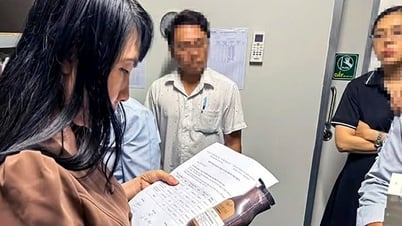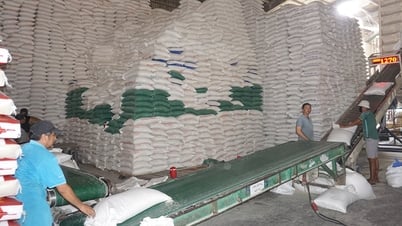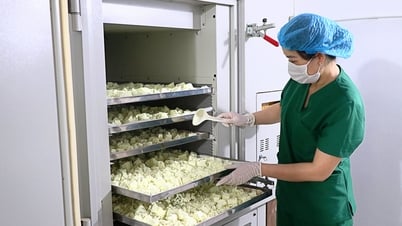
Dr. Nguyen Huu Hieu - Pediatric Center, Bach Mai Hospital - said that many people think that gastrointestinal bleeding due to gastric and duodenal ulcers only occurs in the elderly, but in fact, there are children who have it.
Gastrointestinal bleeding in children is a common phenomenon of gastrointestinal bleeding in children with clinical manifestations such as vomiting blood, passing black stools or passing bloody stools. Gastrointestinal bleeding accounts for about 10 - 20% of cases visiting a gastroenterologist. However, the degree of bleeding can vary. The disease can be an emergency that requires timely diagnosis and treatment or it can be a mild manifestation that allows for a delay in diagnosis and treatment.
"We need to distinguish between the upper and lower digestive tracts. Upper gastrointestinal bleeding is often caused by inflammation, esophageal ulcers, esophageal varices rupture in portal hypertension syndrome, gastroduodenitis in poisoning, stress, Schönlein Henoch, food allergies, gastric and duodenal ulcers...
Causes of lower gastrointestinal bleeding include small intestinal hemangioma, necrotizing enterocolitis, gastrointestinal infections caused by bacteria and parasites penetrating the intestinal mucosa, intussusception...", said Dr. Nguyen Huu Hieu.
Some common clinical manifestations of children with gastrointestinal bleeding are vomiting blood, passing bloody stools... When the patient is hospitalized, doctors will examine the ear, nose and throat area to look for signs of bleeding at the vascular point, nasal polyps, throat lesions with corrosive substances or drugs, examine the abdomen to look for old surgical scars, intussusception or symptoms of surgical abdomen; consider symptoms suggesting the cause: enlarged liver and spleen, collateral circulation, subcutaneous bleeding...
Parents and family members need to pay attention to detect some of the following serious signs to take their children to the hospital as soon as possible, such as children showing signs of anemia: dizziness, pale skin, fatigue; Children eating, drinking poorly or refusing to eat; Upper abdominal pain, belching, heartburn; Jaundice, abdominal distension or larger than normal; Excessive thirst; Vomiting bright red blood or blood clots; Passing black or bloody stools, more tired after each vomiting or bowel movement...
Parents should equip themselves with knowledge on how to care for children with gastrointestinal bleeding, especially early recognition of signs of anemia as well as slow growth in children to have timely care and treatment measures, avoiding unfortunate events. When seeing children with the above symptoms, parents should take their children to the nearest medical facility so that doctors can promptly treat them.
Source: https://laodong.vn/suc-khoe/tre-nho-10-16-tuoi-da-mac-xuat-huyet-tieu-hoa-1375903.ldo


![[Photo] Vice President Vo Thi Anh Xuan, French President Emmanuel Macron and his wife visit Hanoi University of Science and Technology](https://vphoto.vietnam.vn/thumb/1200x675/vietnam/resource/IMAGE/2025/5/27/267b6f2bdf3e46439f081b49f6ec26b1)




![[Photo] Hungarian President begins official visit to Vietnam](https://vphoto.vietnam.vn/thumb/1200x675/vietnam/resource/IMAGE/2025/5/27/ab75a654c6934572a4f1a566ac63ce82)



















































































Comment (0)